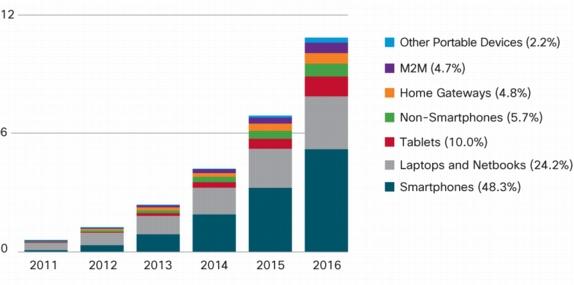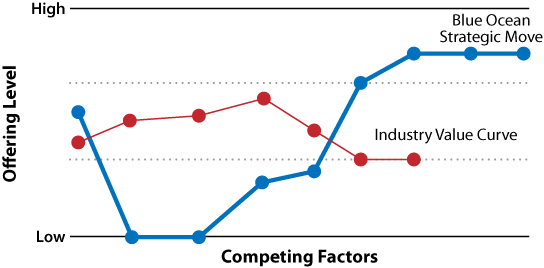Product Introduction
A Mind-Reading Shopping Cart is a useful device for those who think that grocery shopping is a burden. The cart will provide information on the selected products as well as customer reviews so that the user knows what product is worth buying. Furthermore, the software will be able to warn the user about products that do not fit the user’s dietary standards. To avoid wasting time at checkout, the cart will be able to scan all purchases and accept digital payment.
Business Model Canvas
As already mentioned in the presentation on the Mind-Reading Shopping Cart, key partners of the company are software providers that develop software for the cart itself. Service providers like grocery shops or shopping centers can also become partners within the business model canvas since they can promote the cart inside their facilities. Key activities that relate to the Mind-Reading Shopping Cart include the development of the product itself, it’s manufacturing, distribution, and, lastly, product marketing. In the age where technologies dominate every aspect of the business, the key resource for product marketing is social media since it reaches the widest audience across all levels.
When it comes to the primary segments of customers, the Mind-Reading Shopping Cart is predominantly targeted at bust individuals that have very little time for shopping; however, this product can also appeal to the elderly that need assistance when shopping for groceries. Individuals interested in the latest technologies should also be targeted since they can bring significant revenue to the company.
Within the business model canvas, relationships with customers are what bring the most success to the business. The company-developer of the Mind-Reading Shopping Cart should establish a strong, trusting relationship with its customers who will be able to ask for assistance if any issues occur. Through the establishment of a strong relationship with clients, a company will have a more unified business model across all levels; by knowing what customers need or want to improve, the developers of the Mind-Reading Shopping Cart will quickly and efficiently cooperate with primary stakeholders to keep customers satisfied.
The channels through which customers can be reached involve five stages: awareness, evaluation, purchase, delivery, and after-sales. The value propositions involve reaching the target audience, finding new talent to work on the innovation, and build a professional network. Primary costs involve web hosting costs, product development costs, marketing costs, as well as general and administrative costs.
Value Proposition Canvas
The value proposition canvas for the Mind-Reading Shopping Cart consists of the value proposition and the customer segment. Within the value proposition, the primary services the shopping cart offers include user-friendly voice recognition software, kinetic motion sensors, and quick access to the Internet. Gain creators are the latest technologies, the cart being a convenient solution for shopping that saves time and effort, and immediate replacements of repairs in case of problems. The ‘pain relievers’ for customers the Mind-Reading Shopping Cart offers are the ability to visualize a shopping list, quickly get product reviews, as well as no need for pushing the cart since it drives itself.
The customer segment includes gains, pains, and customer’s jobs. The gains the shopping cart offers include time-saving, innovative interactive technologies, easy shopping experience, and getting new information about products. Pains include the lack of mobility of the gadget in its early versions, getting used to new technologies, and the fact that the cart does not replace human presence. The jobs customers should do involve bringing the cart to the store, downloading the shopping list into the database, and follow the gadget’s instructions.
Five Forces Analysis
- Industry competition. The primary competition for the Mind-Reading Shopping Cart is software developers that offer a range of mobile applications that ease the process of shopping.
- New entrant’s potential. To develop a similar product and enter the industry, a competitor should possess significant resources. Thus, the position of the Mind-Reading Shopping Cart is not threatened yet.
- Suppliers’ power. Since the cart is created from various components and materials, there is a large number of suppliers the company cooperates with. This means that the power of the suppliers is quite low.
- Customers’ power. The target audience and potential customers of the cart is a large group that does not possess significant power in terms of switching to another company.
- Substitute products’ treat. Since currently there is a major competition in terms of gadgets that make life easier, the Mind-Reading Shopping Cart is under threat from substitute products.
Market Data
The market of technologies is dominated by smartphones, laptops, and tablets while unique devices like the shopping cart constitute only two percent of the market share. Figure 1 below illustrates 2011-2016 data on the usage of various gadgets:

Value Curve (Blue Ocean Strategy)
Blue Ocean Strategy created by Chan Kim and Renee Mauborgne is a range of tools a business can implement to be successful in capturing an uncontested space on the market. Using the strategy, developers of the Mind-Reading Shopping Cart can achieve the following result as shown in Figure 2 below:

Intellectual Property Strategy
Because in recent years the concept of intellectual property (IPR) has become significantly strategic (Eckardt par. 2), the developers of the Mind-Reading Shopping Cart should have a clear IPR strategy to protect the innovation of copying. Apart from patenting the innovation, the following strategic steps should be implemented:
Observe
This step involves observation of all layers of the external business environment as well as internal processes within the organization.
Orient
This step involves analyzing acquired information from the previous step and then choosing which information is the most important for the organization.
Decide
This step involves making decisions about the appropriate orientation of the business and actions related to intellectual property.
Act
The last step means implementing all possible IPR actions: creating an IPR department, the creation of the innovation protected by the IPR, creation of IPR assets, and finding a way to leverage all assets within the marketplace (Eckardt par. 18).
Minimum Viable Product Design
Minimum Viable Product (MVP) is a particular variation of a product that allows the company to gains the most information about the customer without too much effort (Ries par. 3). To create the MVP for the Mind-Reading Shopping Cart, the company should divide it into two dimensions: the software and the cart itself. First, the company should present the application that is the core of the cart and see how customers respond to it: what is successful and what needs improving. Second, the developers should offer the cart itself to the customers and get all the necessary information.
Implementation Plan and Budget
The primary budget for innovation is 9,6 million Dirham. It will be divided into the following costs:
- Personnel payments.
- Supplier payments.
- Buying equipment.
- Marketing.
- Other costs.
Using establishing a concise pattern of connections and relationships between all units in the company, the Mind-Reading Shopping Cart Developers will be able to implement their primary objectives of bringing value to customers. The execution of the plan is linked to preparing action plans and estimates of the budget, program monitoring, and plan evaluation.
Works Cited
“Data on Gadget Ownership” n.d. Web.
Eckardt, Ralph. What Is IP Strategy?. 2012. Web.
Ries, Eric. Minimum Viable Product: a Guide. 2009. Web.
“Value Curve Using the Blue Ocean Strategy” n.d. Web.